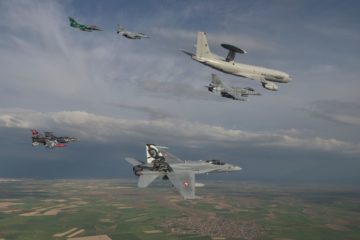Rajan Menon in the Boston Review:
 After a prolonged buildup of forces, the total reaching 120,000 soldiers and National Guard troops, Russian President Vladimir Putin decided on February 24 to launch a full-scale invasion of Ukraine. The decision has revived a sharp-elbowed debate in the United States. One side consists mainly, though not exclusively, of those belonging to the realist school of thought. This side insists that Putin’s move can only be understood by taking account of the friction that NATO’s eastward expansion created between Russia and the United States. The other side, primarily comprised of neoconservatives and liberal internationalists, retorts that Putin’s protests against NATO’s enlargement are bogus. They contend that Putin’s animosity toward democracy—particularly the fear that its success in Ukraine would rub off on Russia and bring down the state that he has built since 2000—was the sole reason for the war.
After a prolonged buildup of forces, the total reaching 120,000 soldiers and National Guard troops, Russian President Vladimir Putin decided on February 24 to launch a full-scale invasion of Ukraine. The decision has revived a sharp-elbowed debate in the United States. One side consists mainly, though not exclusively, of those belonging to the realist school of thought. This side insists that Putin’s move can only be understood by taking account of the friction that NATO’s eastward expansion created between Russia and the United States. The other side, primarily comprised of neoconservatives and liberal internationalists, retorts that Putin’s protests against NATO’s enlargement are bogus. They contend that Putin’s animosity toward democracy—particularly the fear that its success in Ukraine would rub off on Russia and bring down the state that he has built since 2000—was the sole reason for the war.
Both sides have succumbed to the single factor fallacy. Given the complexities of history and politics, why should we assume that Putin has only one aim, only one apprehension? In consequence their exchanges have been inconclusive, producing more heat than light.
More here.
